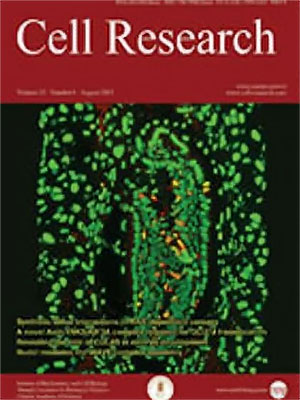Volume 6 Issue 2, December 1996: 101-114
ORIGINAL ARTICLES
Studies on DNA-protein interactions in the upstream regulatory region of the human e-globin gene promoter
YAN ZHI JIANG, YA DI CHEN,RUO LAN QIAN
Shanghai Institute of Cell Biology, Chinese Academy of Sciences, 320 yueyang Road, Shanghai 200031, China
Correspondence: RUO LAN QIAN
The erythroid –and developmental stage-specific expression of the humane-globin gene is controlled, in part, by the 5’flanking DNA sequence of this gene. In the present study, we have used DNA sequence of this gene. In the present study, we have used DNA-pretdin binding assays to identify trans-acting factors which regulate the temporal expression of the huamane-globin gene durind development. Using gel mobility shift assays and DNasel footprinting assays , a nuclear protein factor (termede-SSF1 ) in the nuclear extracts from mouse hasmatopoietic tissues at d 11 and d 13 of gestation was identified . It could specifically bind to the positive control region (between -535 and -453bp) of the humane-globin gene. We speculated that thee-SSF1 might be an erythroid –and developmental stage-specific activator. In addition, we found another nuclear protein factor (termede-R1) in the nuclear extract from mouse fetal liber at d 18 of gestation, which could strongly bind to the silencer region (between-392 and -177bp) of this gene.) there fore , we speculated that thee-R1 might be an erythroid- and developmental stage-specific repressor. Our data suggest that bothe-SSF1 ande-R1 might play important reles in developmental regulation of the humane-globin gene expression during the early embryonic life. On the other hand, we observed that the binding patterns of nuclear proteins from three cell lines (K562, HEL and Raji ) to these regulatory regions were partially different. These results suggest that different trans-acting factors in K562, HEL and Raji cells might be responsible for activating or silencing the humane-globin gene in three different cell lines.
FULL TEXT | PDF
Browse 2444


